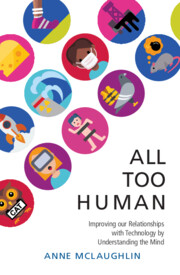Book contents
- All Too Human
- All Too Human
- Copyright page
- Contents
- Figures
- Tables
- Preface
- Acknowledgments
- Introduction
- 1 “Brace for Impact”
- 2 Bad Water
- 3 Hybrid Vigor
- 4 A Mind Divided
- 5 All the Light We Cannot See
- 6 Mistakes
- 7 History Repeating?
- 8 Needles in Haystacks
- 9 Apt Pupils and Alien Invaders
- 10 A Relative to Truth
- 11 Old Principles for New Worlds
- Conclusion
- Notes
- References
- Index
9 - Apt Pupils and Alien Invaders
Published online by Cambridge University Press: 27 January 2022
- All Too Human
- All Too Human
- Copyright page
- Contents
- Figures
- Tables
- Preface
- Acknowledgments
- Introduction
- 1 “Brace for Impact”
- 2 Bad Water
- 3 Hybrid Vigor
- 4 A Mind Divided
- 5 All the Light We Cannot See
- 6 Mistakes
- 7 History Repeating?
- 8 Needles in Haystacks
- 9 Apt Pupils and Alien Invaders
- 10 A Relative to Truth
- 11 Old Principles for New Worlds
- Conclusion
- Notes
- References
- Index
Summary
The "apt pupils" reside in the human head - constricting or dilating based on a person's environment. Vision and thinking interact, giving away when a person finds another attractive, or is dealt a good hand at poker. The chapter starts with examples of how the ways our eyes work should affect how we design the technology we use, such as the design with the colors on a car dashboard for the best night vision. Seeing at night is important, especially when driving, and human factors psychologists have developed the best ways to make sure pedestrians are visible at night. I move from the specifics of vision to how we use that vision to recognize what we’re seeing. The example here comes from a BBC documentary on a man with Capgras syndrome - he can recognize his parents visually, but doesn’t believe they are his actual parents. This opens a window onto how we pair the sights coming in through our eyes with the emotions we’ve learned to feel about other people. You need both for true recognition. The last example is how you can train yourself to recognize certain objects to the point that they send a specialized signal through your brain - birdwatchers call this “getting the jizz.” Understanding vision and recognition helps us to make sure that the technology we work with is as safe and easy to use as possible.
- Type
- Chapter
- Information
- All Too HumanUnderstanding and Improving our Relationships with Technology, pp. 110 - 129Publisher: Cambridge University PressPrint publication year: 2022

